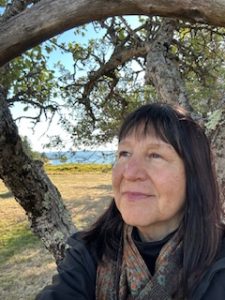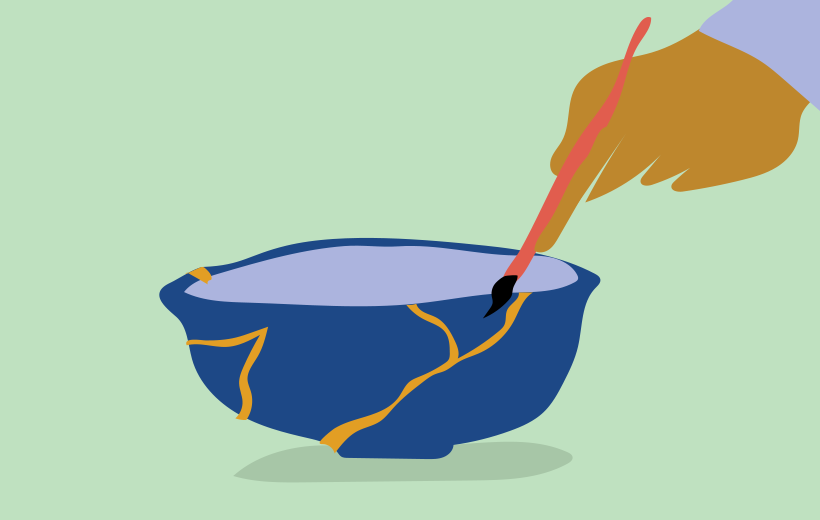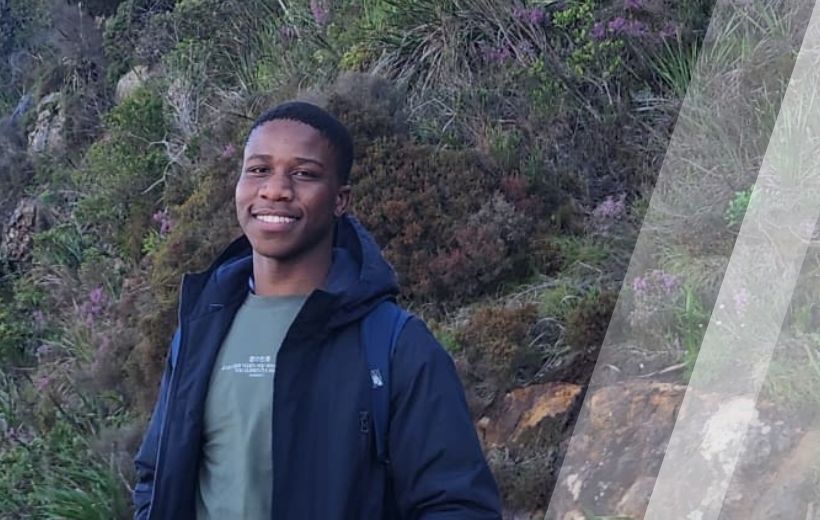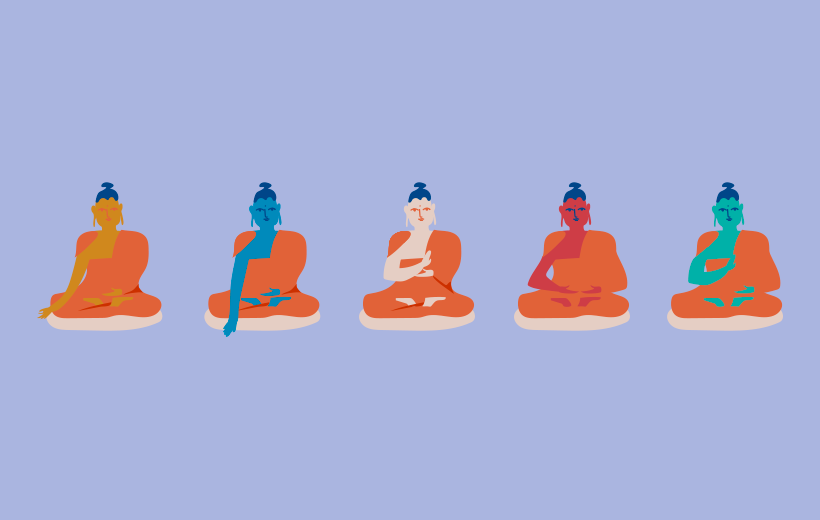Riding the Waves in the Ocean of Emotions
By Merra Young • 3 min read

HOW SERENDIPITOUS to be writing while on a writer’s retreat on an island in the North Atlantic. On the island, the mists roll in, the sun shines, and clouds come and go. The low and high tides change by nine feet each day. So it is with our lives, inner and outer, weather changing, our human vulnerability amidst life’s stormy waves. We all have an amazing capacity to experience the richness and range of our human emotions — joys and sorrows.
Our nervous systems are designed to move in and out of survival modes of flight, fight, freeze, collapse, rest, and digest. Our reactive and unhealthy habit patterns may have helped us survive, but no longer serve us and may cause harm. They are “hardwired” to protect us; however, we can get “stuck,” habitually activated, and flooded when stressed and out of balance. A former therapist, Alisa Eland, writes in her poem Anxiety: “constant butterflies in my stomach, tension buzzing throughout, high alert … Constant anxiety wears me down. Pushes me into hibernation.”
Fortunately, we are resilient beings, and there are practices for emotional regulation to help us respond, attend, befriend, and reframe our reactivity. This is especially necessary in uncertain times in our chaotic world.
Discovering how to be with and ride these waves is our collective challenge. We all experience life transitions, trauma, loss, and unexpected change. Buddhist psychology teaches us that suffering is not personal. The first noble truth acknowledges that there is suffering in life, everything changes, and all is impermanent. Pema Chödrön refers to this as “the great heart of sorrow.” It takes courage to be open and present with our pain and fears while respecting our limits.
In the poem The Guest House, Rumi says: “Learn the alchemy true human beings know: the moment you accept what troubles you’ve been given, the door opens.” Being present with difficult emotions transforms them into compassion and wisdom, brings healing and spiritual growth, and deepens our meditation practice.
Mingyur Rinpoche provides effective steps to care for our anxiety, which also apply to other difficult emotions. We can relate to them as opportunities or teachers—by acknowledging our natural aversion and reactivity, and nonjudgmentally even feel grateful for them, as “‘sand in the oyster’ forms a pearl.”
“Discovering how to be with and ride these waves [of emotion] is our collective challenge. ”
— Merra Young
I struggle with medical anxiety. My blood pressure goes up, often with intense physical sensations, my “blood runs cold,” and thoughts start to swirl and catastrophize. My practices include those Mingyur Rinpoche describes in his Seven Steps in his monthly teaching: first check things out medically, breathe, practice inquiry with awareness of sensations, thoughts, and emotions, and then simply ‘sit.’ I may visualize a safe place or image, ground with a mantra or equanimity phrase (“this too shall pass”), walk outside, write, and reach out for support. I practice self-compassion, sending compassion and well-wishes to others who also feel anxiety, including the healthcare practitioners.
There are many creative ways to respond to and be present with difficult emotions. The point is not to try to fix or get rid of them. For example, a client with severe trauma started drawing pages of turquoise waves. Years later, the client brings them to mind, a reminder to “ride the waves.” I have stuffed animals and a basket of stones in my office for clients to hold, make movements, sounds, or simple rituals — light a candle, read a poem, or play a song.
Many of us have trauma of varying degrees. We may experience “grief brain” after loss or traumatic events; our executive functioning is compromised. We may feel guilt, shame, or blame ourselves or others when things are out of our control. We may feel anxious, depressed, or experience an existential crisis. Symptoms vary from exhaustion and sleep disturbance to panic attacks, appetite changes, or irritability.
Clients and students often welcome being led in a guided practice — just the invitation to breathe and/or drop awareness into the body, connect with emotions, and become grounded in the present through our senses. These may offer support for an overwhelmed caregiver, a new widow, someone facing a diagnosis of a life-threatening or chronic illness, a single parent of neurodiverse children, and others with losses and life transitions.
Guiding them gently, I invite a kind attention to sweep through the body with awareness, to rest in the breath, or to ground with a sound or neutral sensation that feels safe, such as the touch of their feet on the floor — Inviting them to soften faces, shoulders, and bellies with loving-kindness nurtures broken hearts. Others may try walking meditation. They begin to feel calmer and more grounded. Our capacity to be present grows stronger; we can learn to ride the waves. Changing our relationship with our emotions shifts our perspective — like a view from a bridge over stormy seas — awakening compassion for our shared humanity and all life.
We might get tossed into the ocean, but not drown. We have ways to get back to shore.
October 2025

Merra Young, MSW, LICSW, is a seasoned integrative psychotherapist, certified MBSR teacher and senior practice leader at Tergar TMSP. She teaches at the University of Minnesota, Bakken Center for Spirituality and Healing. Merra is in private practice and at The Center for Grief and Loss. She lives with her husband, William and their persnickety cat. She loves walking and biking in nature. She lives in Minneapolis on the unceded land of the Dakota & Anishinaabe nearby the Mississippi River and B’dote.
Learn meditation under the skillful guidance of world-renowned teacher Yongey Mingyur Rinpoche at your own pace.


What if the conflicts that fracture us could become the gold that mends us? In this deeply personal reflection, Emilda Rahim offers a meditative journey through the pain of disconnection toward healing, clarity, and quiet transformation.

For first-year university student Tshepo Molekwa, meditation has become more than just a stress reliever — it’s a way to stay grounded, make wiser choices, and bring deeper meaning into student life.

What if every emotion you’ve ever tried to get rid of — anger, jealousy, confusion — was actually a doorway to wisdom? The five buddha families offers such an exploration.
If you enjoyed reading our articles, please join our mailing list and we’ll send you our news and latest pieces.